Ever felt like sprucing up your home or office with a bit of green, something nice hanging off the walls or ceiling? Some people go the traditional way of using common plants in pots or starting their own herb garden. But in a house where time is a luxury, air plants are the way to go. Discover now the best air plants and how to grow them at home.
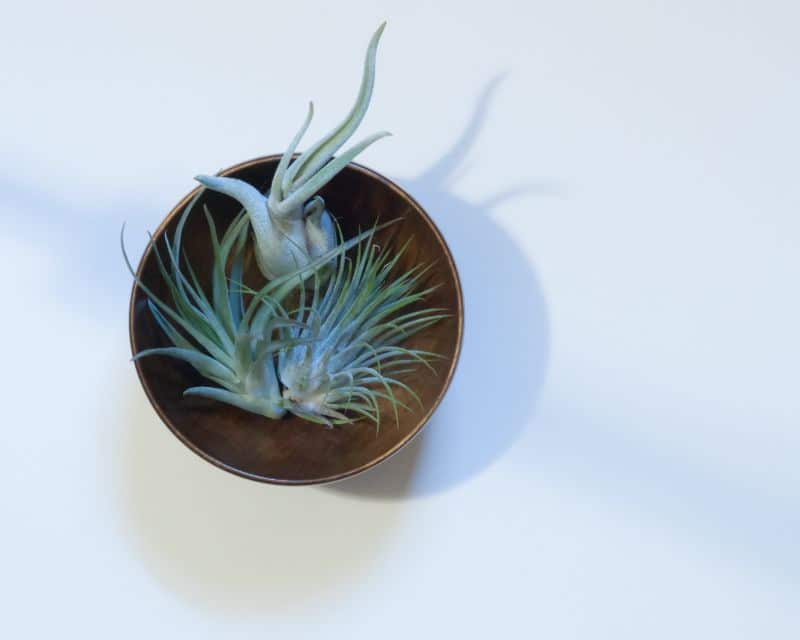
Air plants (sometimes called Aerial Plants) are one of the best (not to mention cheapest!) plants for your home.
These plants don’t only look special, they also have several effects on the air we breathe. They are essentially a healthy air filter, aside from being cute little things in themselves.
Let’s get to know them: how they grow, how to take care of them, and how to keep them alive.
What Are Air Plants?
Air plants have roots above the ground. You will find most of them hung in pots with little to no soil at all.
There are many types of air plants. Some of them have traditional terrestrial roots, like the spider plant, but even this one doesn’t rely on its roots to survive.

Some air plants, called epiphytes, have completely given up soil. The textbook example for this is the orchid (pictured above).
These flowers have developed roots that don’t need soil to collect nutrients from. Instead, they collect them from the air while relying on a third-party plant for support.
Epiphytes are favorites with indoor gardeners and landscape architects due to the ease of growing and taking care of them.
Most of these plants are also best put in places where one can easily see them, to create a calming and happy atmosphere.
Most air plants have several air-filtering properties, which is the number one reason for anyone trying to grow these plants. You will definitely want to have these little cute greens hanging around.
The Best Air Plants for Your Home
If you’re looking for help in choosing your first air plant to grow and take care of, then look no further. Here are some helpful suggestions for plants suited to anyone.
1. Lady-of-the-Night Orchid
The lady-of-the-night orchid (Brassavola Nodosa) is a species of the Brassavola air plant and is appropriately named for its nocturnal tendencies.
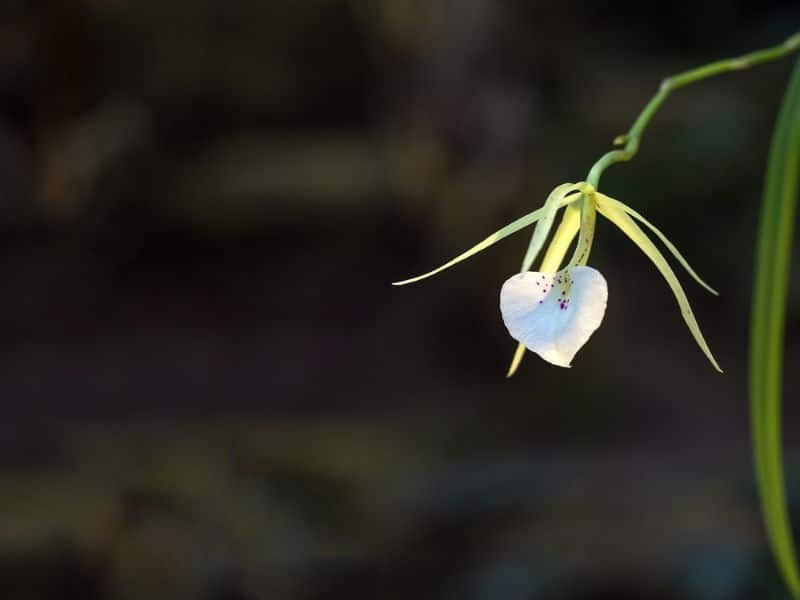
Good to know: This air plant is easy to grow, has long-lasting inflorescences, and its nightly scent can easily encompass a large space.
This orchid has white showy flowers and an undeniable strong citrus scent, emitted in the dark hours to attract night-pollinating moths.
2. Vanilla Bean Orchid
It might come as a surprise to you to know that the famous and well-loved vanilla flavor is taken from an orchid!
The vanilla orchid (specifically Vanilla planifolia) is the only orchid commercially cultivated for its source of vanillin, the vanilla flavor.
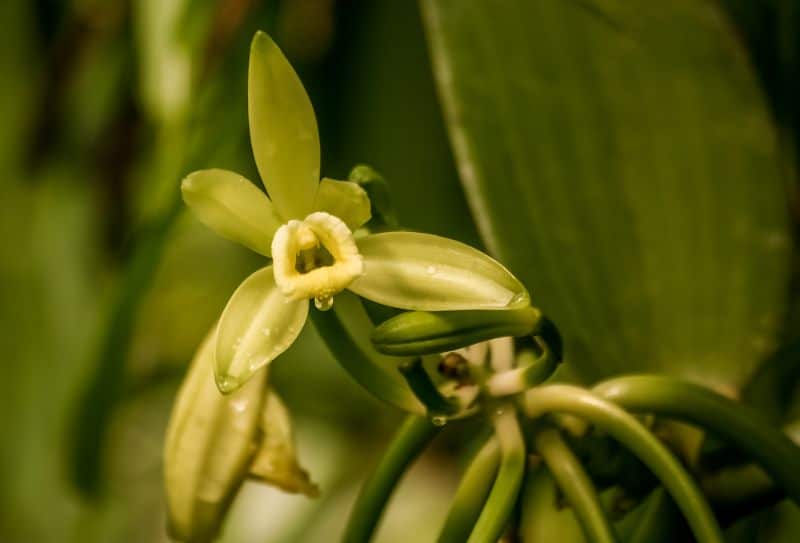
Important: Unlike the Brassavolas, these air plants are quite hard to grow. The orchid grows like a vine, and its flowers only bloom for one day.
However, it’s still worthwhile to pursue planting it as a novelty to have your own tiny vanilla farm (although you wouldn’t be harvesting and earning vanilla anytime soon).
3. Dancing Lady Orchid Air Plant
The dancing lady orchids, or the Oncidium orchids, are a group of diverse orchids, with equally diverse characteristics.
The classy lady pictured above is Oncidium sphacelatum, otherwise known as the “Kandyan Dancer” because of its resemblance to a Sri Lankan dancer.
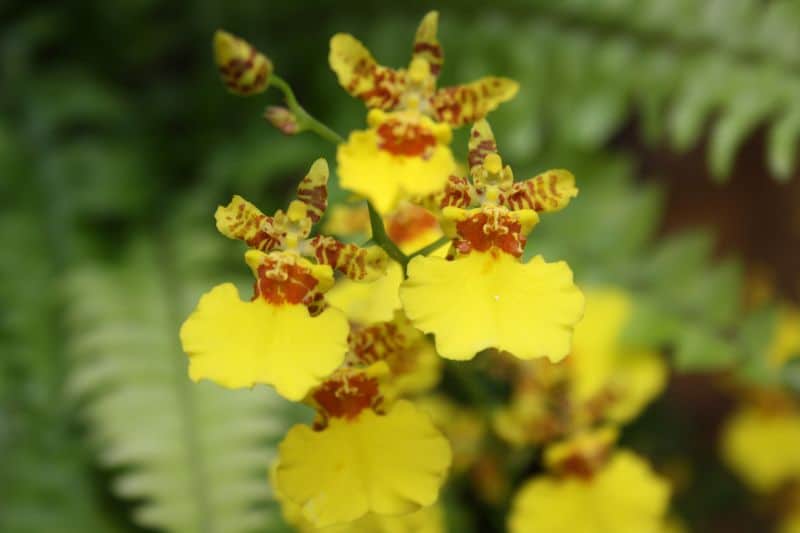
Another well known Oncidium orchid is the Oncidium Sharry Baby, which smells like chocolate.
If you plan to grow a lively and fragrant air plant collection, you don’t want to miss the unique chocolaty smell and gorgeous shapes of these orchids.
4. Lady’s Slipper ORCHID
Lady’s slipper orchids or Cypripedioideae get their name from the slipper-like pouches of their flowers.
When insects fall inside these pouches, they are covered with pollen, this is how this particular plant reproduces!
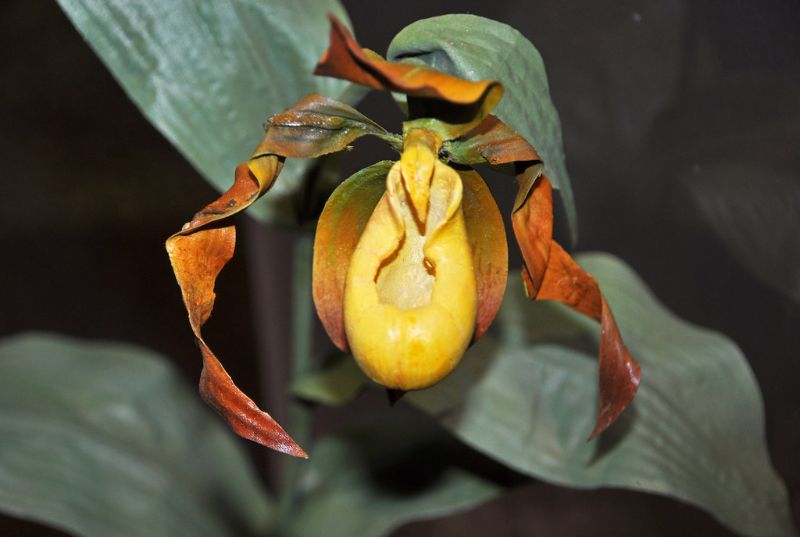
A good number of these orchids aren’t actually air plants and grow better on land. But some can handle being potted lightly and made into aerial plants, like the one in the image above, the American yellow.
5. Guarianthe Skinneri
The Guarianthe Skinneri is a well-known orchid and a great air plant to add to your collection!
It’s found in warm areas of the US like Florida and the Gulf Coast. In fact, this orchid is actually the national flower of Costa Rica.
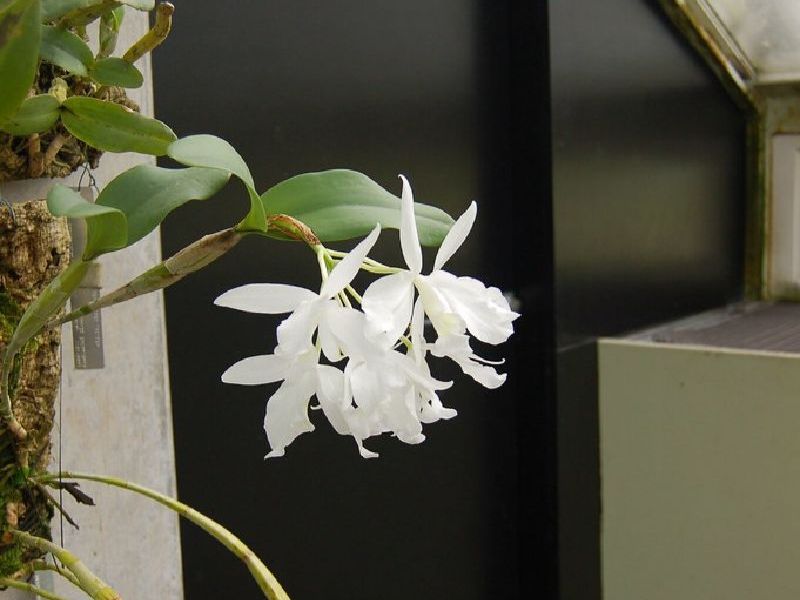
It’s fairly easy to grow, just like most other air plants. Because of this, it’s a good choice if you’ve never had an air plant before.
6. Spider Air Plants
The spider plant or Chlorophytum comosum is one of the easiest air plants to grow, and it’s also one of the best for air purification.
The plant is durable and adaptable, so can be a good air plant for your bedroom, bathroom, or just anywhere else in your home.
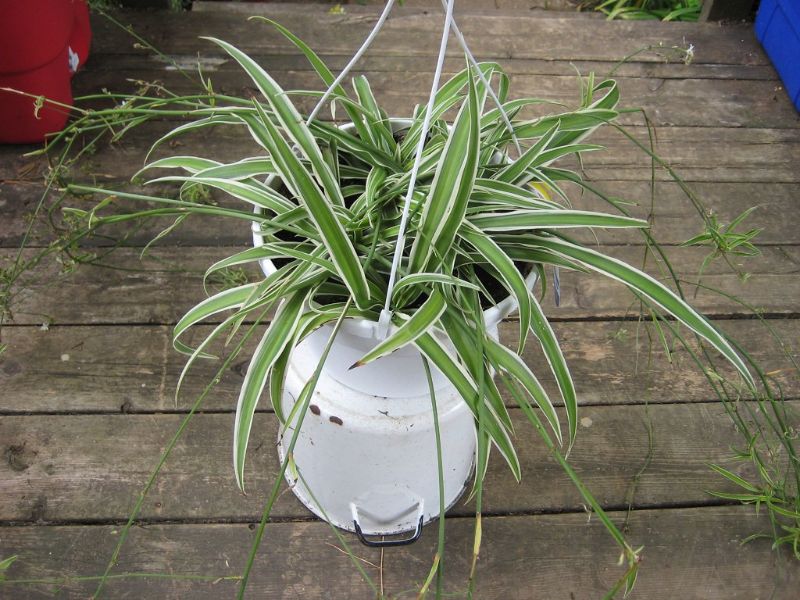
The spider plant owes its name to its spiderettes, or the small plants sprouting from the mother plant. These spiderettes can become spider plants themselves.
Important: This plant is more terrestrial than aerial, however, so the caring routine for it is more similar to that of plants growing in soil than hanging ones.
7. Tillandsia Brachycaulos × Abdita
This cute Tillandsia is a hybrid of the Tillandsia Brachycaulos and Tillandsia Abdita. Both the Brachycaulos and the Abdita exhibit bright red hues in full bloom.
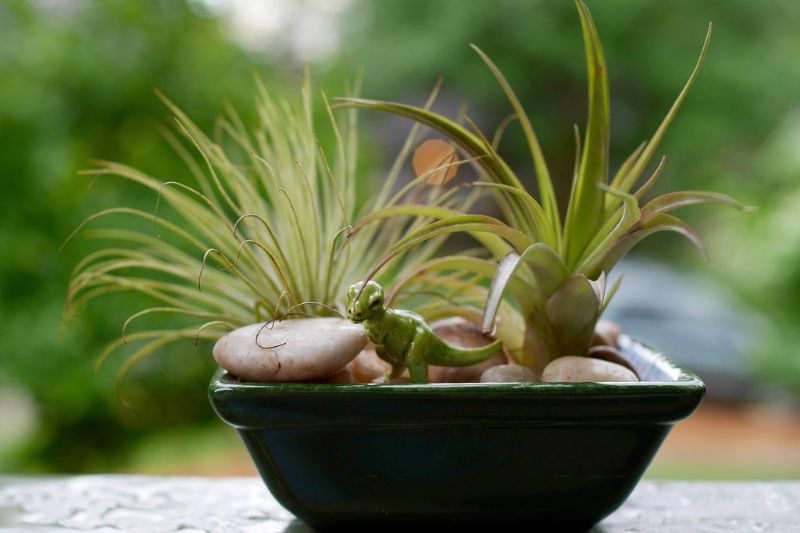
No surprise then that this hybrid produces vivid red and pink inflorescences in its prime.
These species of air plants are highly coveted due to their significant shift of hue from growth to bloom. They are also relatively easy to grow and take care of.
8. Tillandsia Xerographica Aerial Plant
Tillandsia xerographica is perhaps the grandest of the aerial plants. With its long tapering leaves waving below its own base, it attains a full, spherical shape that can fill a space.
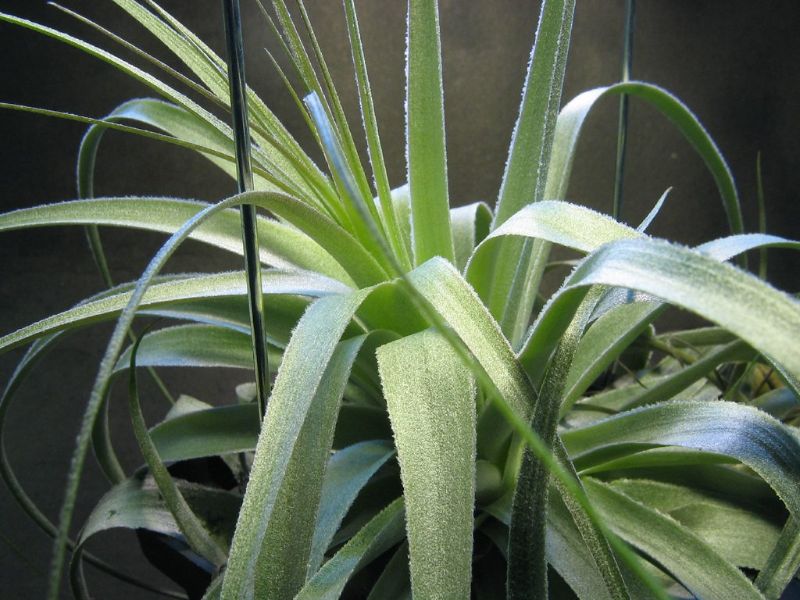
Its curls at the tips of its leaves and the magnificence of its rosette base are its unique charms.
These are both excellent reasons to include this aerial plant in your home as part of your indoor garden!
9. Tillandsia Tectorum Ecuador
Requiring the most minimal of care, the T. Tectorum Ecuador is a furry little friend for your other air plants.
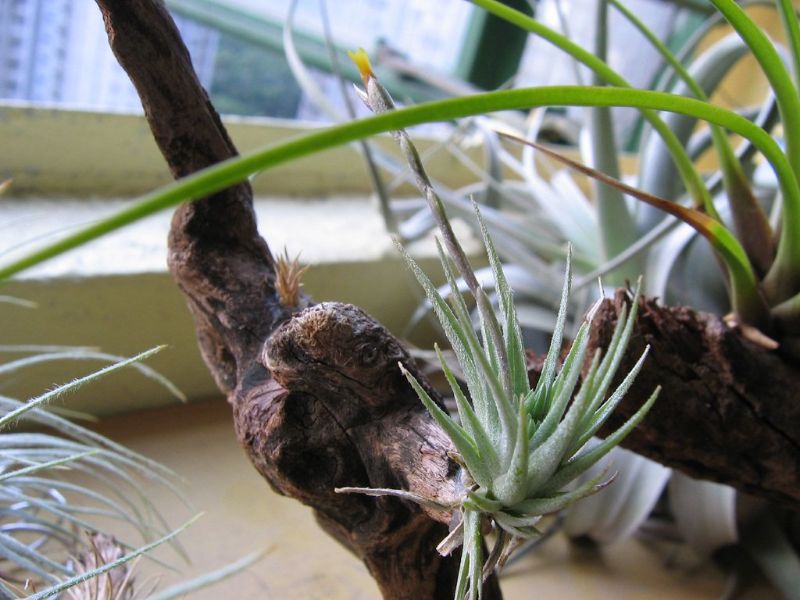
This tiny one hails from the warm, warm lands of Peru and Ecuador. Due to its trichomes–small hairs or outgrowths, this plant can use nutrients effectively very effectively.
Because of this, it’s a good air plant for beginners. In fact, there are more not-to-dos than to-dos in taking care of this little fellow!
10. Tillandsia Stricta
Tillandsia Stricta flowers can be considered a one-hit-wonder in the world of air plants. This is due to the fact that T. Stricta only blooms once. To make up for it, the flowers last longer than those of other air plants.
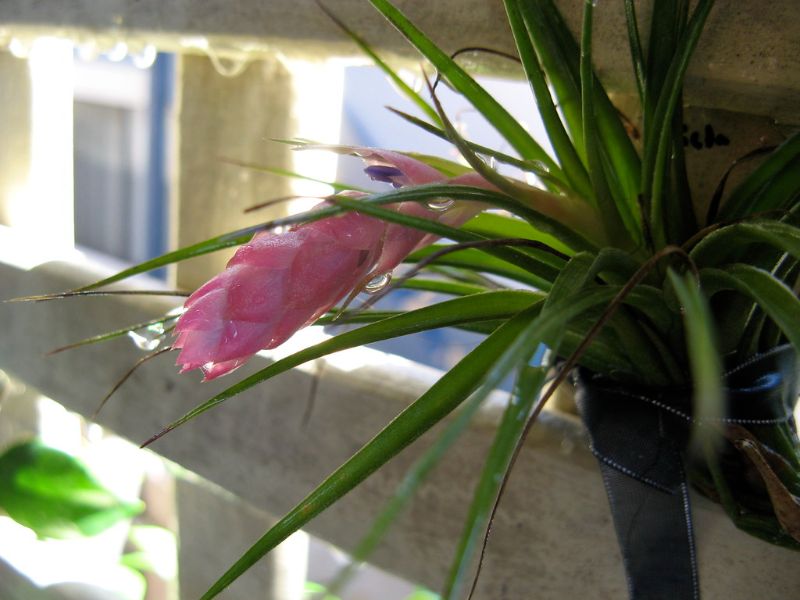
After blooming, “pups” grow from under the flower. You can take the pups off when they reach a third of their mother plant’s size and let them grow independently.
11. Tillandsia Ionantha
The T. Ionantha air plant is one of the most popular air plants. That’s because it’s cute, easy to grow, and very easy to take care of.
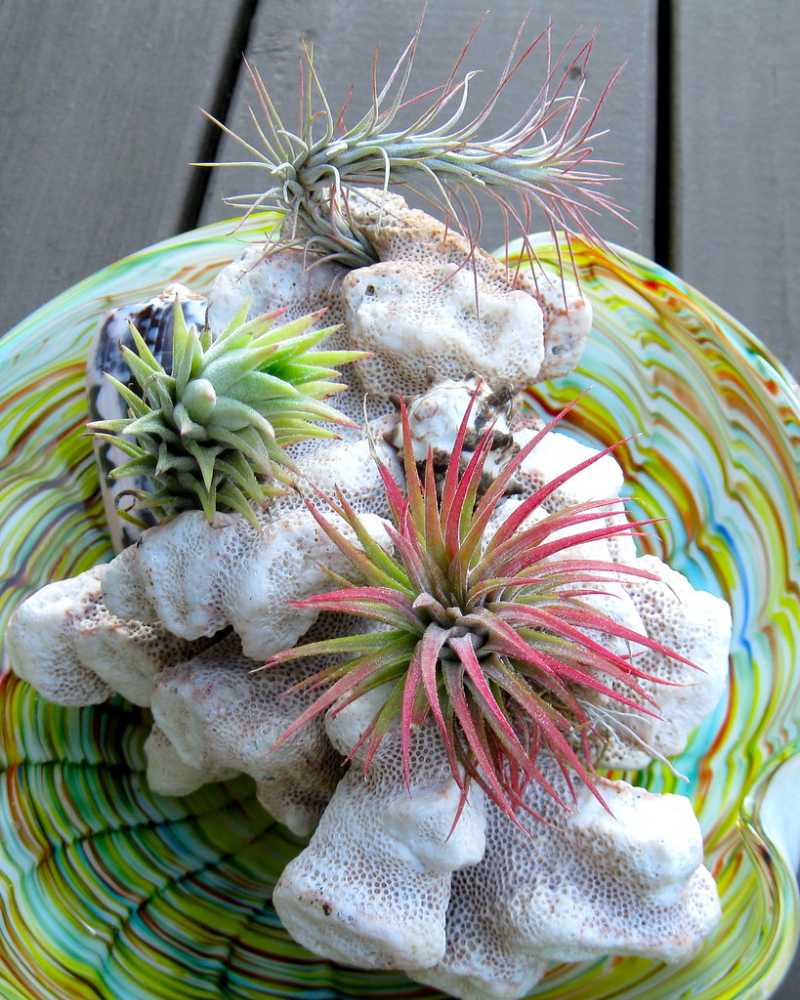
The growth cycle of the ionanthas starts with green and silver-hued leaves. Over time, the leaves extend outward as their green hue becomes darker.
When the blooming phase commences, the leaves create a red and pink gradient together with the greens, just like in our picture.
12. Tillandsia Funkiana
Tillandsia funkiana air plants probably look more like a cactus than anything else. At first, these plants look sharp, but they are actually quite soft.
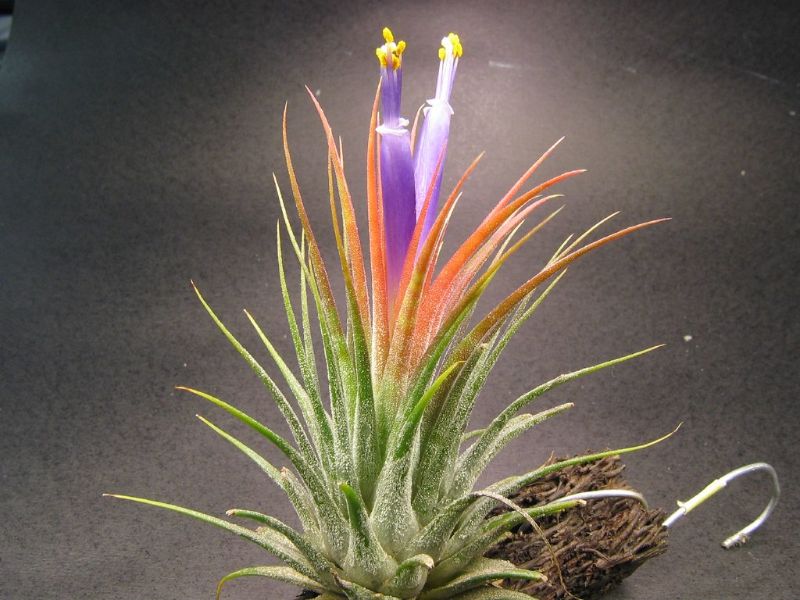
It grows on a stem and exhibits lightly-colored greens, making it a beautiful accent anywhere in the home. It also clusters very well, as seen in the image above.
13. Tillandsia Bulbosa
These Tillandsia Bulbosa air plants can cast creepy shadows in the night. With their long-winding arms reminiscent of snakes or tentacles, they would be more scary than beautiful.
But take a look at them in the daylight and you’ll love their airy grace and fresh hues.
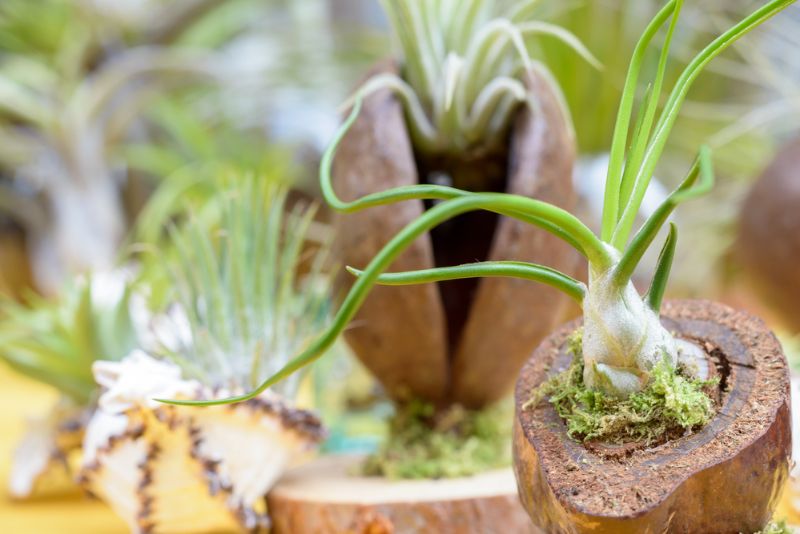
In the bright light, the Bulbosa is a tiny beauty to behold. Its flat leaves form the eponymous bulb, where the arms also come from.
As with most Tillandsias, the Bulbosa is a breeze to take care of. Anyone new to gardening can fall in love with this little plant.
14. Tillandsia Aeranthos
The Tillandsia Aeranthos is best friends with the hummingbird in its natural habitat. The hummingbird itself is responsible for the Aeranthos’ pollination.
This air plant has stiff green leaves that point upward. In bloom, the flowers look pretty in their pink hues while later in the season, they are dappled with beautiful purple ones.
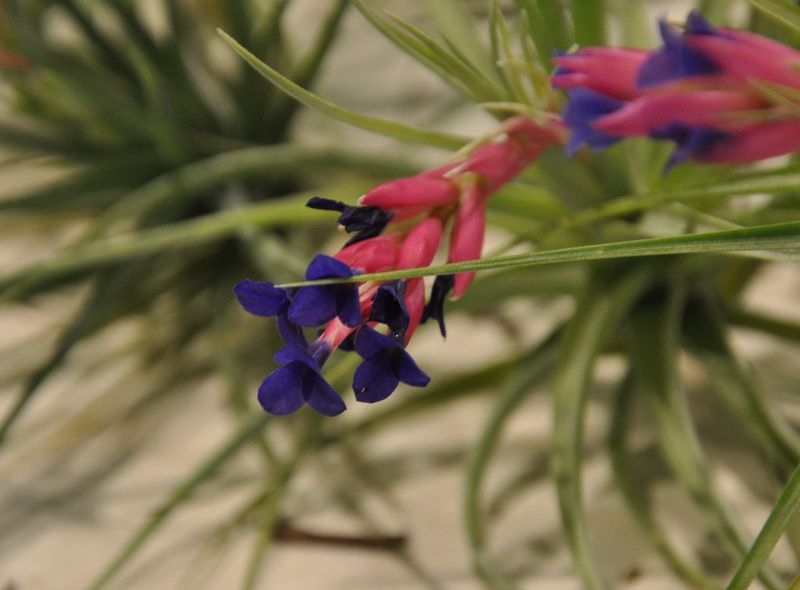
Tip: To take care of this plant, you can remove the growing pups and let them grow independently or leave them be to form a clump.
Either way, the Aeranthos in all its forms is a perfect addition to your home.
15. Tillandsia Caput-Medusae
This one goes by the common name octopus plant or medusa’s head, and rightfully so. With its pseudobulb and outstretched tentacles, Tillandsia Caput-Medusae could be compared to either.
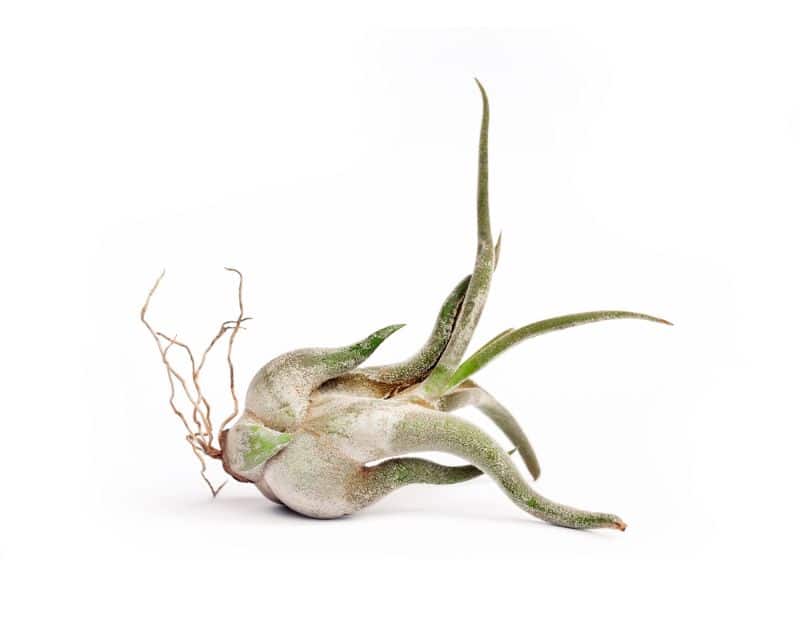
This air plant has all the common characteristics of Tillandsias. It’s a beginner-friendly plant, can form individually or into clumps, and has trichomes which help it in taking in nutrients.
Tip: You can plant in it or around rocks.
Air Plants Benefits: Why You Want Them in Your Home
Air plants rank high in the list of little to no maintenance house plants. Setting them up might be a little tricky, especially the orchids, but after that, there’s nothing much else to do.
They can practically take care of themselves, and because of this, they’re great for anyone with a busy schedule.
But more than this, they actually work as an air filter in your house. More specifically, they purify the air of chemicals and toxins, as shown by the NASA clean air study.
Most of all, they are one of the most beautiful plants you can add to your home. They have a special, exotic look to them that makes them quite wonderful.
Air Plants: Growing and Caring
Maintenance tops all other reasons why anyone would consider an air plant.
Most aerial plants, especially the Tillandsias, require less than an hour of your attention every month, making them some of the easiest plants to grow at home.
You only need to water them a few times a week. Even in passable conditions, they will thrive happily and you won’t have to bat an eye while taking care of them.
But this doesn’t mean that you have nothing to do for them. You just need to follow a few simple tips.
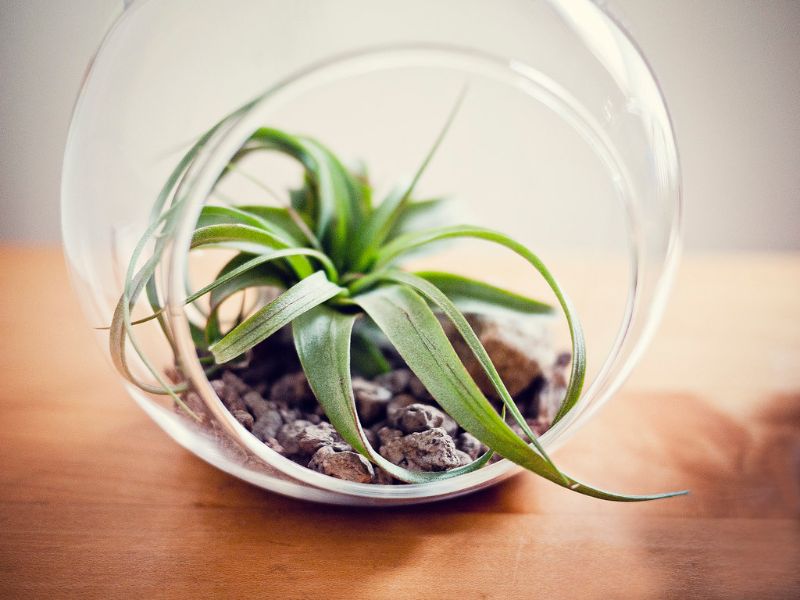
Due to their increased sensitivity to the air around, most of the maintenance of the plants will be during setup.
You will need to determine the optimal growing conditions for the variety you buy and replicate them (a good exercise for any horticulturist!).
Tip: Try keeping air plants near an artificial light, giving them a few hours of near, indirect sunlight, and watching out for any brown or dying leaf tips!
How to Grow Air Plants
As we’ve seen, there are a variety of air plants around so it’s important to consider each plant’s requirements when growing them.
For example, orchids are fussy with their growing conditions. Adapted to tree heights despite their size, they usually require long hours of indirect exposure to the sun and proper air circulation.
Here’s a quick step by step guide to grow air plants.
Step 1 – Get Them from a Nursery
The easiest way to grow air plants is to buy them when they are little. You can also buy the mature plant, but you’ll be paying up to ten times more then.
Step 2 – Find the Right Spot for Them
Undemanding as they are, air plants develop best when they are left mostly undisturbed. In nature, they grow over other plants, in holes in tree trunks, between rocks, and in other such places.
Find a similar place for them in your garden or home. Or place them in hanging glass jars specially made for air plants. These containers are relatively inexpensive and look wonderful.
Step 3 – Ensure They Get Enough Light
Air plants are especially sensitive to light levels. In the absence of sunlight, use artificial light as a substitute. It’s going to help the plant thrive.
Step 4 – Don’t Forget to Water Them
Air plants still need watering once or twice a week. If you skip on watering them altogether for longer periods, they may dry out and die. You can use a mister or soak them in the sink for a bit.
Here’s a video with more tips on how to grow air plants.
How to Care For Air Plants
Now that you know the main steps for growing air plants, let’s see what you need to do to keep them alive.
Epiphytes
Most epiphytes, like orchids, need just as much water as their natural environment can provide.
Understand the type of plant you own and water it no more no less than what it needs. Usually it’s once a week or less.
Other than that, follow the placement tips we shared above.
Orchids
Some orchids have a moisture storing structure, which means you won’t need to water them as much, whilst others don’t.
You’ll have to provide the latter with all the water they would get in their natural environment.
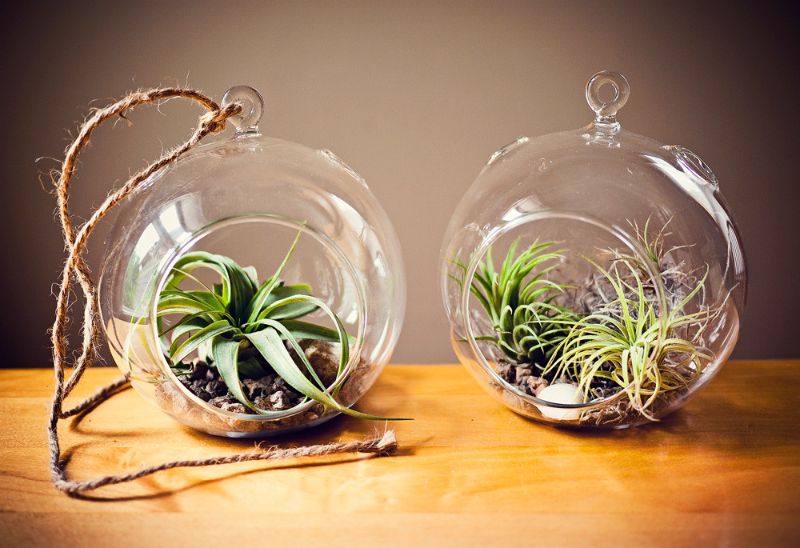
Just remember, some orchids in terrariums can go 2-3 weeks without water if watered properly in-between.
But water them too much, and you’ll soon see the dark, mushy roots and yellowing leaves (tell-tale signs of overwatering).
Tillandsias
With tillandsias, you look for clues in their appearance.
Tip: You can estimate their water intake with a simple rule of thumb: hairy ones require less water, while glossy ones require more.
Like orchids, excessive moisture can damage them more than dryness.
Also, most of them require no soil or trunk for support; they are perfectly happy suspended on various surfaces as long as environmental conditions are stable.
Where to Buy Air Plants
Many small and big companies are selling air plants in retail and in bulk. There are a number of creators on Etsy who sell air plants with or without hanging pots and other supports or elements.
Amazon also provides a good selection if you’re looking for a wide range of options than what your local store provides.
For garden hobbyists and expert gardeners, a niche market of air plant sellers exists solely for this purpose.
These sellers can have a much more diverse range of air plants than what you can find in big stores. Try visiting your local independent gardening stores to find out more about these.
Tip: If you want as little fuss as possible in growing an air plant, get the right plant pot, terrarium, or air bowl for it.
Air Plants Commonly Asked Questions
We hear a lot of questions about air plants and air plant gardens, so we thought we might as well compile them in this section and answer them. We hope you’ll find them useful!
How do you take care of air plants?
Making sure you place your air plant where it has enough light and properly water it are both crucial. Be sure to brush up on the soaking and care instructions that are specific to your plant when purchasing one. Read our guide on caring for air plants to learn everything you need to know!
How long do you need to soak an air plant?
The directions for soaking vary based on the type of plant you choose. On average, you can expect to soak them anywhere from twenty minutes to one hour, once every ten days. Learn more about how to grow and care for air plants.
Are air plants good for the environment?
Air plants can filter the air to make it cleaner and don’t require a lot of water or no soil whatsoever. For these reasons, they are very good plants for the environment. Discover now the best air plants for your home.
You Can Air Plant with a Black Thumb
Maybe your roses and your tulips keep dying. Maybe your sweet potato crop is a disappointment. And maybe that magnolia tree that you planted with so much care just withered.
Don’t let any of that get you down. Air plants can lift your spirits even if you have a black thumb (by the way, we don’t think there’s any such thing, it’s just a question of experience).
Air plants, thanks to the ease with which you can grow and care for them, are like a window through which you can get to know your inner gardener.
Whether you’re serious about gardening or just want to dabble in it a bit, air plants are great plants to start with. They will bring you beauty and calm every day, to say nothing of cleaner air!
Now over to you. Do you have any experience with air plants? We’d love to hear from you. And don’t forget to share our post if you enjoyed it. We appreciate your support!

Hi, Nancy! I am responsible for the plants in the atrium of the church where my husband is the pastor. The atrium gets a lot of very bright sun. There are a few plants that I overwinter and re-use each summer in outdoor pots. In order to provide them with humidity to prevent spider mites, I have a small indoor fountain that is re-purposed.
I want to put a plant on top of the the fountain. I recently glued a miniature phalenopsis with some moss around it. The moss is kept wet by touching the water flowing through the fountain. It seems that either the sun is too harsh in the atrium and/or the wet moss is too much for the orchid. Either way, it is dying.
What would be a good choice in an air orchid to glue on top of the fountain? (Note: I have clay pots stacked with a pump bringing water up through the clay pots. The water drips down through the pots to recirculate.) Thank you in advance for any advice you can give me.